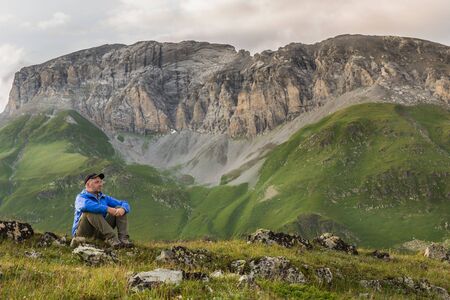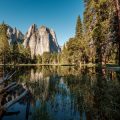Overview of Snowdonia National Park
Nestled in the heart of North Wales, Snowdonia National Park stands as one of the UK’s most cherished natural treasures. Spanning over 800 square miles, this dramatic landscape is famed for its rugged mountains, sweeping valleys, and crystalline lakes. The iconic peak of Yr Wyddfa (Mount Snowdon), the highest point in Wales, draws adventurers from all over the country, eager to experience its challenging trails and panoramic vistas. Beyond its mountainous terrain, Snowdonia offers ancient woodlands, tranquil rivers, and a coastline peppered with sandy beaches—an impressive variety that sets it apart from many other British parks. The region is also home to unique wildlife, such as wild goats, otters, and rare bird species like the peregrine falcon, making each hike or camping trip a chance to encounter something remarkable. With its blend of adventure and serenity, it’s no surprise that Snowdonia has become a favourite destination for hikers and campers across the UK who are seeking to combine physical challenge with an immersive experience in nature.
Classic Hiking Routes in Snowdonia
Snowdonia National Park is renowned for its dramatic landscapes and iconic hiking trails, making it a haven for outdoor enthusiasts. Whether you are new to hillwalking or an experienced mountaineer, there are classic routes that promise both adventure and immersion in nature. Two of the most celebrated trails—the Snowdon Horseshoe and the Glyderau—stand out for their unique challenges, stunning vistas, and deep-rooted place in British hiking culture.
Snowdon Horseshoe
The Snowdon Horseshoe is widely considered one of the finest ridge walks in the UK. This circular route takes you around the peaks encircling Llyn Llydaw, including Crib Goch, Garnedd Ugain, Snowdon (Yr Wyddfa), and Y Lliwedd. It is a demanding scramble with sections of exposure that require a good head for heights and some technical ability.
| Trail | Difficulty | Length | Time Required | Recommended Kit |
|---|---|---|---|---|
| Snowdon Horseshoe | Strenuous (Grade 1 scramble) | 12 km (7.5 miles) | 6-8 hours | Sturdy boots, waterproofs, map & compass, helmet (for Crib Goch), snacks, water, first aid kit |
This route is best suited for those with previous scrambling experience and should be avoided in poor weather conditions due to slippery rocks and high winds.
Glyderau Traverse
The Glyderau range offers another classic challenge, featuring jagged summits such as Glyder Fawr and Glyder Fach. The traverse can be approached from Ogwen Cottage or Pen-y-Pass, taking in striking features like the Cantilever Stone and Castell y Gwynt. The terrain is rocky and uneven, requiring careful footing.
| Trail | Difficulty | Length | Time Required | Recommended Kit |
|---|---|---|---|---|
| Glyderau Traverse | Challenging (some scrambling) | 10 km (6 miles) | 5-7 hours | Ankle-support boots, layers for warmth, gloves, OS map (OL17), sufficient food & water, emergency whistle |
The Glyderau is ideal for those seeking rugged mountain scenery without the crowds often found on Snowdon’s summit paths. Both these classic routes demand respect for changing mountain conditions—always check forecasts before heading out and let someone know your plans. Proper preparation ensures a safe and rewarding experience in the heart of Welsh wilderness.

3. Top Camping Spots and Facilities
Snowdonia offers a diverse range of camping experiences, from well-serviced caravan parks to remote wild pitches beneath the peaks. If you’re after established amenities, Cwmrhwyddfor Campsite near Cadair Idris and Llyn Gwynant Campsite in the heart of the national park are local favourites, with hot showers, easy access to hiking trails, and stunning lake or mountain views. For those who prefer quieter corners, lesser-known spots like Tyn Cornel Camping near Bala or Nantcol Waterfalls Campsite offer a more tranquil stay with fewer crowds and plenty of natural beauty.
Wild Camping Guidelines
If you’re considering wild camping, it’s important to follow local guidelines: pitch late, leave early, and always seek landowner permission where possible. Stick to small groups, avoid lighting open fires (portable stoves only), and ensure you leave no trace—pack out all rubbish and minimise impact on the landscape. Snowdonia’s weather can be unpredictable, so bring sturdy kit and check forecasts before heading out.
Tips for Choosing Your Base
When selecting a campsite, think about your planned routes and daily mileage. Base yourself near trailheads if you want early starts for summit attempts or opt for lakeside pitches if you’d like evening swims or paddleboarding after your hike. Some sites cater specifically to walkers with drying rooms and gear storage—a real bonus after a wet day in the hills. Finally, book ahead during peak season (especially summer holidays) as popular sites fill up quickly.
Weather, Safety, and Responsible Exploration
Snowdonia’s weather is famously unpredictable, with conditions that can shift rapidly even in the height of summer. Understanding local patterns is essential for anyone planning to hike or camp in this rugged national park. In general, expect cool temperatures, frequent rainfall, and strong winds—especially at higher elevations. It is not unusual for mist to descend quickly, reducing visibility on trails.
Typical Weather Patterns in Snowdonia
| Season | Average Temperature (°C) | Common Conditions | Daylight Hours |
|---|---|---|---|
| Spring (Mar-May) | 5-12 | Showers, variable sun | 11-15 |
| Summer (Jun-Aug) | 10-18 | Mild, occasional heavy rain | 16-18 |
| Autumn (Sep-Nov) | 7-14 | Wet, windy spells | 8-13 |
| Winter (Dec-Feb) | -2-7 | Frost, snow on peaks | 7-9 |
Mountain Safety Advice
- Preparation: Check the Met Office forecast before heading out. Always plan your route and leave a copy with someone you trust.
- Navigation: Carry an Ordnance Survey map and compass; don’t rely solely on mobile phones due to patchy signal.
- Packing: Wear layered clothing and sturdy boots. Bring waterproofs, sufficient food and water, a torch (flashlight), first aid kit, whistle, and emergency shelter.
- Pacing: Start early to make the most of daylight. Allow time for breaks and unexpected delays due to weather or terrain.
- If Lost or Injured: Stay put if safe. Use a whistle or torch to signal for help. Dial 999 and ask for Mountain Rescue if needed.
The Importance of Leaving No Trace in British Wilderness
The ethos of ‘leave no trace’ is deeply respected across the UK’s national parks. Snowdonia’s wild beauty relies on every visitor taking personal responsibility to protect the landscape. This means carrying out all litter—including biodegradable waste—avoiding disturbance to wildlife, and sticking to established paths where possible to prevent erosion. Campfires are discouraged; use a portable stove instead. When wild camping (where permitted), pitch late and leave early, ensuring your spot looks as untouched as you found it.
5. Integrating Local Culture and Heritage
Exploring Snowdonia offers far more than scenic landscapes and thrilling trails; it also presents a unique opportunity to immerse yourself in Welsh culture, language, and history. By weaving cultural experiences into your hiking or camping itinerary, you gain a deeper appreciation of this remarkable region.
Embrace the Welsh Language
While adventuring through Snowdonia, youll notice bilingual signage and hear locals speaking Cymraeg (Welsh). Try learning basic phrases such as “Bore da” (Good morning) or “Diolch” (Thank you) to connect with communities along your route. Many villages host language workshops or offer guided walks where you can practise your Welsh in context.
Visit Historic Sites
Snowdonia is dotted with castles, ancient churches, and remnants of the region’s slate mining heritage. Plan a stop at Dolbadarn Castle near Llanberis or explore the UNESCO-listed Slate Landscape of Northwest Wales. These sites provide insight into the area’s storied past and its role in shaping Welsh identity.
Experience Local Traditions
If your trip coincides with local events, such as an Eisteddfod (Welsh festival of literature, music, and performance), make time to attend. Sampling traditional Welsh cuisine like cawl (hearty soup) or bara brith (fruit loaf) at village pubs is another enjoyable way to engage with local customs after a day on the trails.
Connect with the Community
Supporting family-run campsites, independent shops, and local guides not only enriches your experience but also helps sustain rural livelihoods. Strike up conversations, join community gatherings, or volunteer for conservation projects to leave a positive impact while forging lasting memories in Snowdonia.
6. Practical Tips for Planning Your Trip
Embarking on a hiking and camping adventure in Snowdonia requires some thoughtful planning to make the most of your experience and to stay safe. Below, you’ll find key advice tailored for exploring this stunning region, with a focus on British customs and outdoor etiquette.
Transport: Getting There and Around
Most visitors arrive by train or car. The North Wales mainline serves towns like Bangor and Llandudno Junction, from where local buses connect to hubs such as Betws-y-Coed or Llanberis. If driving, remember that rural roads are often narrow and winding—patience is key, especially when passing tractors or sheep. Parking can be limited near popular trails; arrive early or consider using Park & Ride services where available.
Permits and Camping Regulations
Wild camping is not officially permitted in Snowdonia National Park without landowner consent, but discreet pitching above the highest walls is sometimes tolerated if done respectfully. Always use established campsites when possible—many offer excellent facilities and a warm Welsh welcome. For certain activities (like group events), permits may be required; check the Snowdonia National Park Authority website for up-to-date guidance.
Navigation: Maps, Tech, and Weather
The British weather is famously changeable, so come prepared. Ordnance Survey maps (OL17 covers most of Snowdonia) are essential; even seasoned hikers rely on them alongside GPS devices or smartphone apps. Mobile signal can be patchy in remote areas, so don’t depend solely on technology. A compass and the ability to use it are invaluable skills here.
The British Outdoor Experience: What to Expect
British hikers value quiet enjoyment of nature—greet fellow walkers with a nod or a friendly “hello”, keep noise to a minimum, and always follow the Countryside Code: leave gates as you find them, take litter home, and respect wildlife. Paths can be muddy even in summer; sturdy boots and waterproofs are standard kit. Be prepared for crowds on popular routes during school holidays or bank holiday weekends.
Final Thoughts
With thoughtful preparation and respect for local customs, hiking and camping in Snowdonia offers an authentic taste of the British outdoors: wild beauty, unpredictable weather, friendly faces, and a sense of shared adventure under big Welsh skies. Plan ahead, tread lightly, and savour every step.


